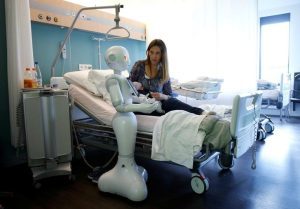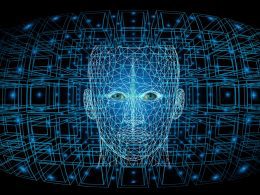The rapid evolution of human-like robots, or humanoid robots, has captivated the imaginations of scientists, engineers, and the general public alike. These robots, designed to mimic human appearances and behaviors, have transitioned from theoretical concepts to tangible, interactive machines that are already beginning to impact various industries. In this article, we will explore the journey of humanoid robots, the latest advancements in robotics and artificial intelligence, ethical considerations, and the transformative effects these robots may have on society in the coming years.
Introduction to Human-Like Robots

Human-like robots, or humanoids, are machines that resemble humans both in appearance and behavior. They are designed to perform tasks that require human-like intelligence, interaction, and mobility. The evolution of humanoid robots can be traced back to the mid-20th century, with early prototypes like Unimate, the first industrial robot, and ASIMO from Honda, which set the foundation for humanoid robotics.
In the 21st century, these robots have become increasingly sophisticated, equipped with artificial intelligence (AI) and machine learning algorithms that enable them to perform tasks autonomously, adapt to their surroundings, and interact with humans in meaningful ways. The demand for humanoid robots has grown exponentially, especially in areas such as healthcare, customer service, and entertainment.
Advances in Artificial Intelligence and Machine Learning
At the heart of modern humanoid robots lies artificial intelligence, which allows them to exhibit behaviors similar to human cognition. Through machine learning and deep learning technologies, these robots can process large amounts of data, learn from their environments, and make decisions based on past experiences.
AI Integration in Human-Like Robots
AI enables humanoid robots to perform a range of functions that would have been unimaginable a few decades ago. For instance, Sophia, a robot created by Hanson Robotics, can engage in conversations, recognize faces, and even express emotions. Sophia’s AI algorithms allow her to process and interpret visual and auditory cues, making her interactions with people more lifelike and responsive. Sophia has even received citizenship in Saudi Arabia, becoming the first robot to have such recognition, symbolizing the extent to which humanoid robots are becoming integrated into society.
Deep Learning in Humanoid Robots
Humanoid robots are also employing deep learning, a subset of machine learning that uses artificial neural networks to mimic human brain functions. For example, robots like Pepper from SoftBank Robotics are designed to interact with humans in a highly emotional and engaging way. Pepper uses natural language processing (NLP) and sentiment analysis to understand human emotions, offering personalized responses based on the emotional state of the user. Pepper is already being used in various sectors, including retail and healthcare, where it helps customers, engages in conversation, and provides emotional support.
Progress in Human-Like Appearance and Movement

One of the most striking advancements in humanoid robotics is the development of robots with human-like appearances and movements. Engineers have gone to great lengths to design robots that look and move as naturally as possible.
Human-Like Design and Skin Textures
Robots today are being built with highly sophisticated materials that mimic the texture and elasticity of human skin. Advanced sensors are embedded beneath the skin to detect pressure, touch, and temperature, giving the robot a sense of touch. Companies like Hanson Robotics are focusing on creating robots with realistic facial expressions and skin textures. Sophia, for example, has been crafted with synthetic skin that closely resembles human skin and can change expressions to convey different emotions, such as happiness, sadness, or surprise.
Human-Like Mobility and Agility
Mobility has also seen significant improvements. Boston Dynamics’ Atlas robot is a prime example of humanoid robots achieving near-human physical capabilities. Atlas is a bipedal robot capable of walking, running, jumping, and performing complex acrobatic movements such as backflips. Its highly sophisticated control systems and sensors allow it to maintain balance in challenging environments, making it one of the most advanced robots in terms of mobility and agility.
This level of physical prowess opens up new possibilities for humanoid robots in various sectors, including search-and-rescue operations, where they can navigate treacherous terrains and assist in emergencies.
Human-Robot Interaction (HRI)
Human-Robot Interaction (HRI) refers to how robots and humans interact, communicate, and collaborate. The field of HRI has seen significant advancements, as robots are increasingly being designed to understand human emotions, gestures, and speech.
Improved Sensory Systems
Recent humanoid robots are equipped with a range of sensors, including cameras, microphones, and pressure sensors, that allow them to perceive the environment and understand human behaviors. For instance, robots like Pepper and Sophia can detect human facial expressions, interpret speech, and respond with appropriate actions.
This ability to read human emotions is especially important in fields like healthcare, where robots can provide companionship to the elderly or patients with mental health conditions. Research has shown that robots equipped with emotional intelligence can help reduce feelings of loneliness and improve the mental well-being of individuals.
Real-World Examples in Healthcare
The use of humanoid robots in healthcare has been a major breakthrough. Pepper has been used in hospitals to engage with patients, provide them with information, and even offer therapeutic interactions. Additionally, in Japan, Robear, a robot designed to assist elderly patients, helps lift and move patients with limited mobility. This type of robot can provide crucial support in a healthcare system that is increasingly strained by an aging population.
Robots in Healthcare: A New Frontier

The integration of humanoid robots into healthcare is a rapidly growing field. These robots can serve as companions for the elderly, assist in rehabilitation, or help with daily tasks. In many cases, robots can perform tasks that would otherwise require significant human effort, allowing healthcare professionals to focus on more critical aspects of patient care.
Case Study: Pepper in Elderly Care
In Japan, where the population is aging rapidly, robots like Pepper are being used to combat the challenges of elder care. Pepper interacts with elderly patients by engaging in conversation, playing games, and offering emotional support. Its ability to recognize facial expressions and respond to emotional cues makes it an ideal companion for individuals who may feel isolated or lonely.
Case Study: Robear in Medical Assistance
Another example is Robear, a healthcare robot designed to assist elderly individuals by helping them get in and out of bed, lift them from chairs, and provide support during rehabilitation. Robear’s design is inspired by the need to reduce the physical strain on caregivers while ensuring the safety and comfort of patients.
Ethical Challenges in Robotics
As humanoid robots become more integrated into daily life, ethical concerns have emerged, particularly regarding the impact of these robots on human workers, relationships, and privacy.
Human-Robot Collaboration and Job Displacement
One of the biggest concerns is the potential for robots to replace human workers in certain industries. For example, humanoid robots could be used to perform tasks in customer service, healthcare, and hospitality, reducing the need for human employees. While this can lead to increased efficiency, it also raises questions about job displacement and the future of work.
Emotional Impact of Human-Robot Interaction
Another ethical challenge is the emotional impact of interacting with robots that appear human-like. Studies have shown that humans may form emotional bonds with robots, especially if they resemble humans. This phenomenon, known as the “uncanny valley,” refers to the discomfort people feel when interacting with robots that look almost human but not quite, making them appear eerie or unnatural. Designers are working to overcome this issue by creating robots with more relatable and approachable appearances.
The Future of Human-Like Robots
The future of human-like robots is filled with possibilities. As technology continues to advance, we can expect robots to become more integrated into daily life, performing tasks ranging from household chores to caregiving and companionship.
Personal Assistants and Companions
Humanoid robots will likely become household assistants, helping with everyday tasks such as cooking, cleaning, and scheduling. They could also provide emotional support and companionship, particularly for elderly individuals or people with disabilities.
Robots in Education and Entertainment
In education, robots could serve as interactive tutors, providing personalized learning experiences for students. In entertainment, robots may act as performers, creating interactive experiences for audiences in theme parks, museums, and theaters.
Key Industry Players in Humanoid Robotics

Several companies are leading the charge in developing humanoid robots, each pushing the boundaries of what is possible in robotics.
Hanson Robotics
Hanson Robotics, the creators of Sophia, are pioneers in creating robots that resemble humans both in appearance and behavior. Sophia has been showcased worldwide and continues to evolve in terms of its conversational abilities and emotional intelligence.
Boston Dynamics
Boston Dynamics has set the standard for robot mobility with its Atlas robot, capable of performing impressive feats of agility. Atlas is paving the way for robots that can perform tasks in physically demanding environments.
SoftBank Robotics
SoftBank Robotics has been at the forefront of creating robots like Pepper that are designed for human interaction. Pepper’s ability to detect and respond to human emotions makes it an invaluable tool in customer service and healthcare.
Robotic Ethics: Balancing Innovation with Responsibility
As humanoid robots become more prevalent, it is crucial to address the ethical implications of their use. From ensuring privacy to maintaining human dignity, the ethical considerations of robotics must be handled responsibly to avoid societal harm.
The Evolving Role of Human-Like Robots
The evolution of human-like robots has come a long way, and their impact on society will only continue to grow. As we integrate robots into more aspects of our lives, they will not only assist in everyday tasks but will also transform industries and change how we interact with technology. The future of humanoid robots is bright, but it must be approached with ethical considerations, emotional awareness, and a focus on enhancing human lives.












